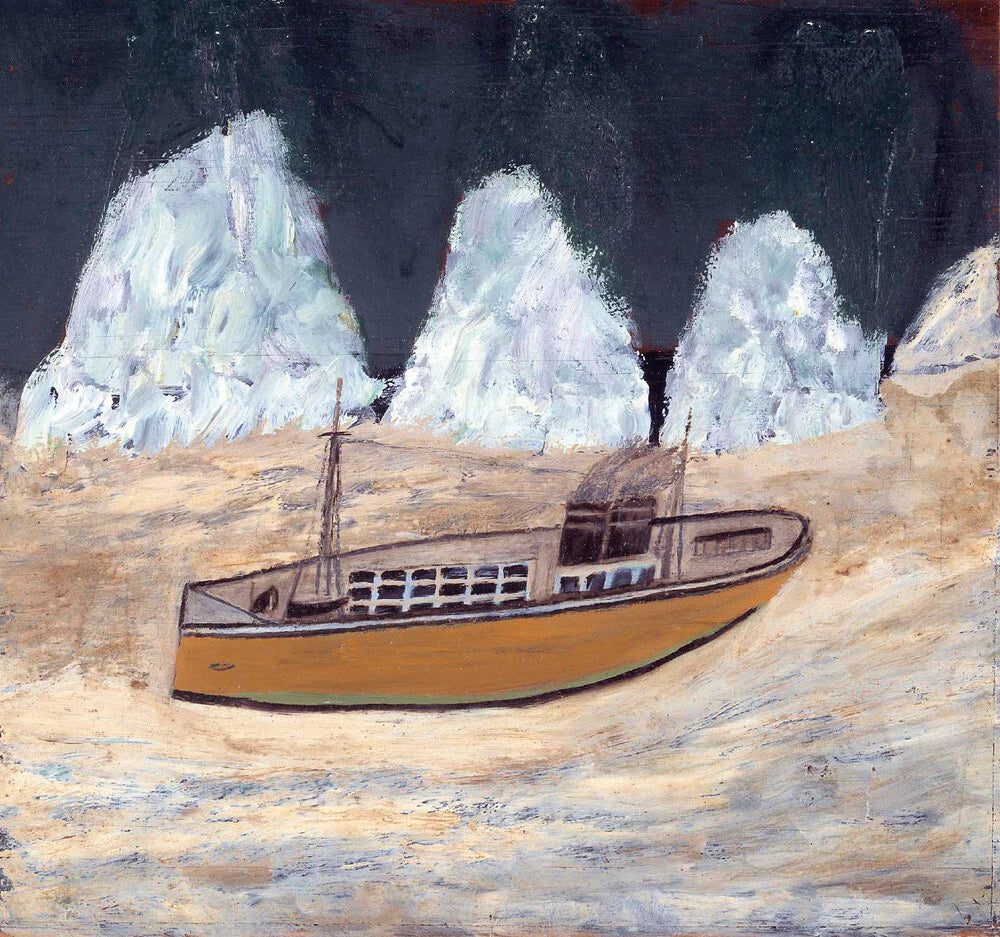Art
The Old Man and the Sea
By Finlay Renwick
Jul 4, 2025

Alfred Wallis liked to paint with his door open. Living alone in a little house in St. Ives, a short walk from Porthmeor beach, the self-taught artist only took up painting in his 70s, working with cheap paint, bits of scrap, cardboard and even the back of train schedules to depict the schooners, trawlers, white-washed cottages and lonely lighthouses of Cornwall.
His neighbours thought he was a bit odd, Ben Nicholson and Christopher Wood thought he was an outsider art genius.

A potentially apocryphal origin story goes that, during the summer of 1928, the two artists were visiting St. Ives for the day when they happened upon two naively-hewn paintings of boats nailed to the wall outside of Wallis’ cottage. An alternative story mentions that, on their way back from the beach, they discovered Wallis painting through his open door. Immediately struck by the unburdened style and primitive energy of the work, the pair saw Wallis as a true modernist, someone untouched by the rigours and expectations of technique and art history.

Alfred Wallis was born in Plymouth, Devon in 1855 and worked as a deep-sea fisherman then, after the death of his wife, a scrap-metal merchant in St. Ives, a picturesque slice of Cornwall with blue water, cobbled streets and postcard cottages, long before the London second home set descended on the far Western tip of England.
In the early part of the 20th century artists began to make pilgrimages to St. Ives, drawn to the beautiful light and peace and quiet that it offered. Nicholson and his wife, the great sculptor Barbara Hepworth, along with Wood and the curator Jim Ede soon became both collectors, as well as promoters and patrons of Wallis. Ede collected more than 120 of his paintings in-between 1929 and 1939, hanging one in his office at the Tate gallery, and later in his house, Kettle Yard, in Cambridge, now a museum.

He had taken up painting “for company,” he told Ede, after the death of his wife, Susan. Working from memory, he recalled the choppy Atlantic during voyages to Newfoundland from Penzance, bruising fishing trips out into the wilds of the North Sea, and the little white houses that pockmarked the coast surrounding his home. Unperturbed by scale or framing, his buildings are off-kilter, horses are expressionistic. “A very fierce and lonely little man,” is how Nicholson referred to him.
Modestly educated, little exists of what Wallis had to say of his own work. “What I do mosley is what use to bee out of my own memery what we may never see again as thing are altered altogether,” he wrote phonetically in 1935.

Despite his unexpected arrival in the galleries and private collections of London’s art world elite, Wallis lived out the rest of his life in relative poverty, often donating the bulk of the cheques he received from Ede and others to those struggling around him. He appeared to be entirely unfazed by any sense of renown, still preferring humble materials and the solitude of his cottage.

Wallis died in 1942. He was buried facing the sea that accompanied and inspired him for most of his life. The potter Bernard Leach decorated his grave with tiles depicting a small mariner at the foot of an enormous lighthouse.
As the Russian sculptor Naum Gabo put it: “To the artist on whom Nature has bestowed the rarest gift, not to know that he is one.”


